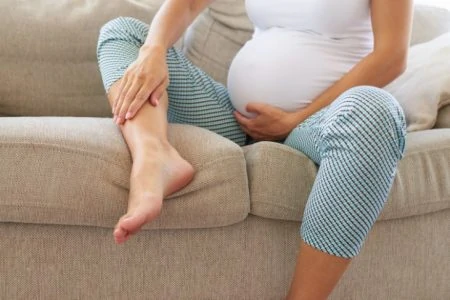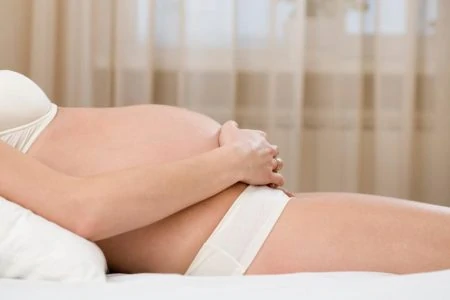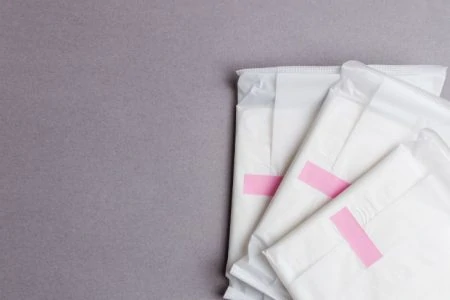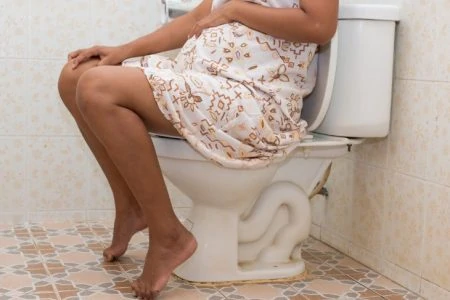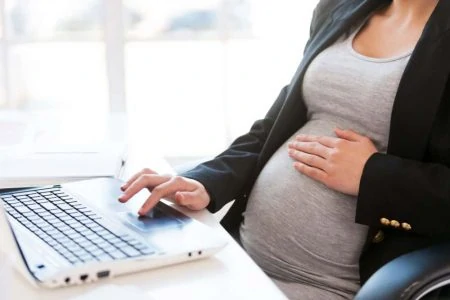Are you pregnant and feeling puffy? Are your shoes suddenly too tight to wear? Are you in desperate need of ways to reduce the swelling so it doesn’t look like you have cankles?
Swelling of the feet and ankles can be a strange but totally normal part of pregnancy. And while it can be pretty uncomfortable, there are things you can do to get some relief. But there are also times when swelling can be a warning that there’s a more serious problem going on.
Let’s learn more about the causes of swelling during pregnancy, when it typically starts and ends, how you can get some relief, and when you should be concerned.
Key Takeaways
- Swelling during pregnancy, called edema, is caused by additional blood and fluids, and often starts around month five.
- To reduce swelling, elevate your feet, avoid standing for long periods, stay cool, and drink plenty of water.
- Excessive or sudden onset of swelling can be a sign of preeclampsia or a blood clot, so contact your healthcare provider if concerned.
- Swelling usually subsides within the first week after giving birth as your body eliminates excess fluid.
Why Does It Happen?
Normal swelling during pregnancy, also called edema, occurs for several reasons but is typically caused by the additional blood and fluids your body likes to hang onto to support your growing uterus, placenta, and baby. Nearly 25% of your pregnancy weight gain is from these extra fluids.
Now that you’re expecting, you have 50% more blood and fluids in your body, but it needs to be stored somewhere, hence your new cankles. Your growing uterus also puts pressure on your veins, impairing the return of blood to your heart, so it tends to pool in your hands, feet, and ankles (1).
And while fluid retention can be a nuisance, it plays a vital role during pregnancy, as it softens your body, allowing it to expand as your baby grows. It also helps prepare your pelvic joints and tissue to open for delivery.
Some factors will put you at higher risk for swelling:
- Standing or sitting for long periods: Sitting or standing for long periods can diminish your circulation, causing your blood and fluids to start to pool down south.
- Long days of activity: While staying active and exercising is important for a healthy pregnancy, too much can cause swelling in your feet and ankles.
- Heat exposure: Swelling tends to be worse on hot summer days. Excess heat can lead to dehydration, and when you’re dehydrated, your body tries to retain as many fluids as possible.
- High or low sodium intake: A moderate amount of salt can help keep blood in the fluid rather than the tissue, but too much or too little will leave you feeling puffy.
- Electrolyte imbalance: Along with sodium, an imbalance of potassium, magnesium, and calcium can also lead to inadequate hydration, causing swelling.
- Consuming large amounts of caffeine: Caffeine is known to cause dehydration, which makes your kidneys hang on to more excess fluids.
- Carrying multiples: Moms with multiples tend to retain more water and experience more swelling.
When Does the Swelling Typically Start?
Swelling can occur at any point throughout your pregnancy, but most women begin to notice it during month five. It often increases during the third trimester as you get closer to delivery. Those who have excessive amniotic fluid or are carrying multiples will probably notice the swelling sooner.
With my first baby, the swelling was so bad in the third trimester that I would wear my UGG slippers to work because nothing else fit.
Editor's Note:
Jennifer Schlette, MSN, RNYou might also have some postpartum swelling from IV fluids during labor and the crazy hormone changes going on in your body. Both of these can cause you to retain fluids in your extremities after delivery. The swelling often worsens before it gets better but is typically a very normal part of the recovery process (2).
With my first baby, my swelling was worse at three days postpartum than throughout my whole pregnancy.
How Can I Reduce the Swelling?
Swelling doesn’t usually pose any threat during pregnancy, but it can sure be annoying and uncomfortable.
Here are 12 ways you can reduce the swelling in your feet and ankles and get some relief:
- Prop Your Feet Up: Be sure to take some time to rest and lounge with your feet above your hips and heart. Remember to avoid lying on your back and try not to cross your legs. If you have a desk job, it might be helpful to have a step stool or stack some books under your desk so you can keep your feet propped up.
- Lay on Your Left Side: Lying on your side, particularly your left side, will relieve increased pressure on your blood vessels and facilitate the elimination of excess fluid and waste through the kidneys.
- Avoid Standing and Sitting for Lengthy Periods: Changing positions can really help to keep your circulation flowing and prevent blood from pooling in your feet and ankles. Try using a treadmill desk if you have a desk job, and make sure you’re taking time out of your day to sit and relax if you have a job that keeps you on your feet.
- Avoid Caffeine: Try to keep your caffeine intake to a minimum to avoid dehydration and swelling. While a cup of coffee a day is considered safe during pregnancy, you need to make sure you’re drinking plenty of water to compensate (3).
- Moderate Your Sodium/Salt Intake: While too much or too little sodium can cause bloating and swelling, salt is still essential for staying adequately hydrated. Moderate your salt intake by avoiding processed foods and table salt. Lightly salt your food with high-quality sea or Himalayan salt.
- Drink Plenty of Water: This might seem counterproductive, but drinking more water actually helps flush out the extra fluids your body is retaining. Staying hydrated rids your body of waste and excess sodium, minimizing the swelling. Aim to drink ten 8-ounce cups of water daily while you’re expecting (4).
- Wear Comfy Shoes: Find the best shoes for pregnancy that stretch and are easy to slip on to accommodate your puffy feet. Put the high heels in storage, and avoid clothing that’s tight around the ankles and calves.
- Stay Cool: Steamy summer days can aggravate your swelling, so stick to the shade, or dip your feet in the pool. Minimize your time outside and enjoy the A/C instead. Keeping a cold compress on swollen areas also does wonders.
- Go For a Swim: Swimming isn’t just a great prenatal exercise. It also helps improve leg circulation (5).
- Get a Prenatal Massage: Cash in on a much-needed massage to stop yourself from feeling like a giant marshmallow. Prenatal massage improves circulation, stimulates the soft tissues, and reduces fluids that collect in swollen joints. Always check to make sure your massage therapist is certified in prenatal massage.
- Try Compression Stockings: Talk with your doctor about compression stockings if your swelling is significant. These can help keep circulation flowing through your legs, but you need to be sure to get ones that are thigh high, and put them on before you get out of bed in the morning so that blood and fluids don’t have a chance to pool around your ankles.
- Try Using Supportive Insoles: Many women who have been through pregnancy will tell you about the impact it had on their feet. As your baby grows during your pregnancy, and your body changes to accommodate it, your feet will too. Your body produces pregnancy hormones that can loosen your foot ligaments, causing them to expand, resulting in swollen feet and ankles, flattened arches, and increased shoe size. That’s why it’s so crucial for pregnant women to take care of their feet. Wearing comfortable shoes is a great start, but you might find you need to add a pair of orthotic insoles to relieve your tired, achy feet. Insoles will give your feet the support and stabilization they need, especially as your center of balance changes. And with the changes to your arch height that come with pregnancy, you want to ensure your arches are fully supported for maximum comfort.
While “pregnancy support hose” do exist, they can be very uncomfortable and bind around the abdomen. For this reason, I usually recommend thigh-high compression stockings (that you can also find in non-white colors) to keep fluid from collecting in the feet and ankles.
Editor's Note:
Jennifer Schlette, MSN, RNWhen Do I Need to Worry?
While some swelling can be a regular part of pregnancy, excessive or sudden onset of swelling is cause for concern, as this can be a sign of preeclampsia.
Other signs of preeclampsia include:
- High blood pressure.
- Headache that doesn’t go away with Tylenol.
- Blurry vision.
- Nausea or vomiting.
- Facial swelling.
- Puffiness around your eyes.
- Pain in the upper right abdomen.
- Weight gain of more than two pounds in one week.
- Shortness of breath.
- Decreased urinary output.
Be sure to contact your health care provider if you experience any of these signs of preeclampsia throughout your pregnancy, as the condition can lead to seizures, stroke, kidney and liver failure, and even stillbirth and maternal death. Preeclampsia is nothing to mess around with!
You should call your doctor if one of your legs is significantly more swollen than the other, as this can be a sign of a blood clot. You might also have tenderness, heat in the area, or pain in your calf or thigh. Your provider will most likely order an ultrasound to rule out a clot.
Remember
When Will the Swelling Go Away?
Swelling typically likes to stick around until delivery. After you deliver, it will disappear pretty quickly as your kidneys kick into gear and your body gets rid of the extra fluid.
You will probably find yourself sweating and peeing a lot during those first few days after giving birth (6). And remember, it might get worse for a few days postpartum before it gets better.
FAQs
Don’t Let the Swelling Get You Down
You might be feeling uncomfortable and unattractive with all the swelling going on in your ankles and feet, but it shall soon pass.
For most expectant moms, the swelling tends to peak in the third trimester and goes away quickly within that first week after giving birth.
Always be sure to keep your doctor in the loop, just in case, as the swelling could be a sign of a bigger problem, such as preeclampsia or a blood clot.
